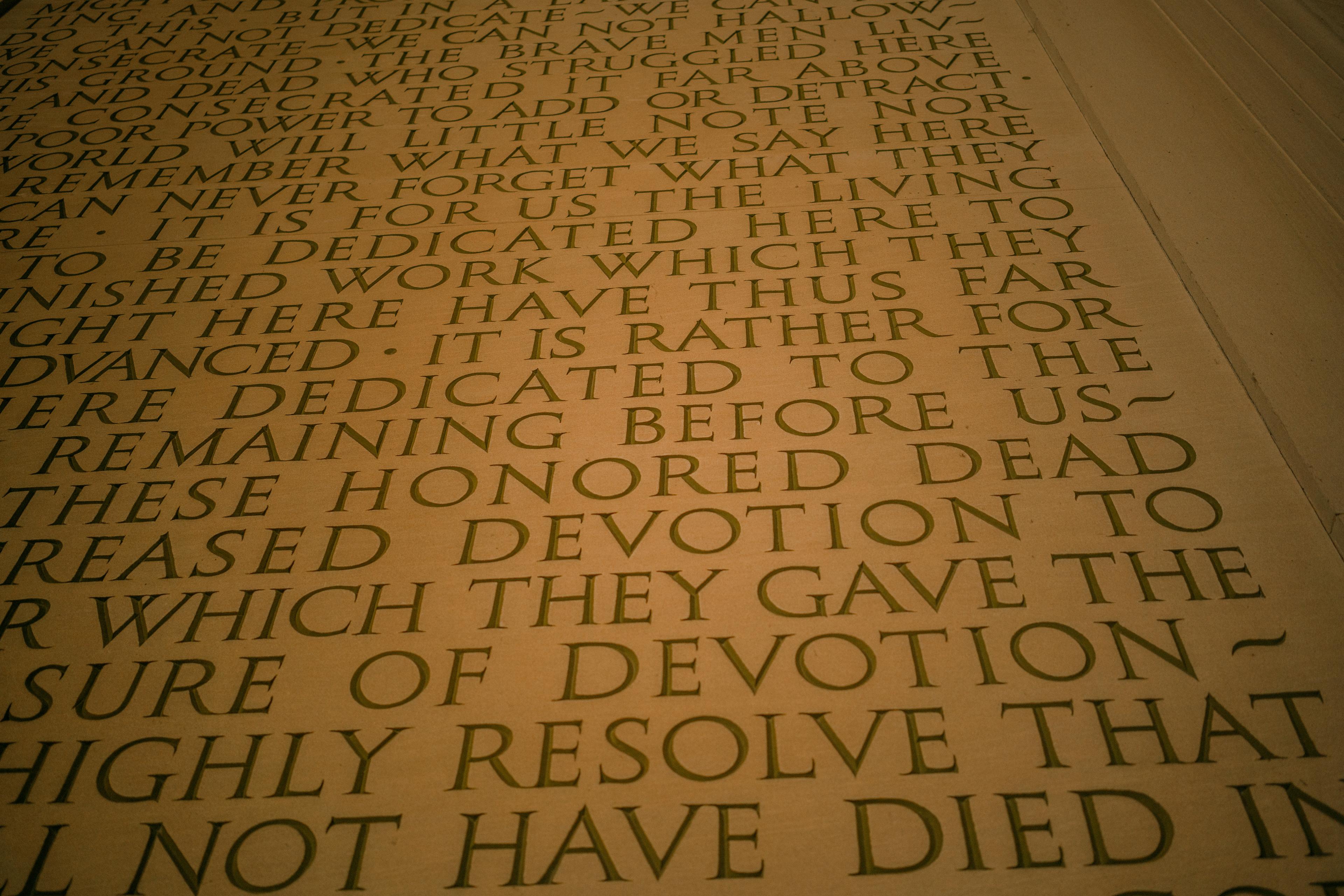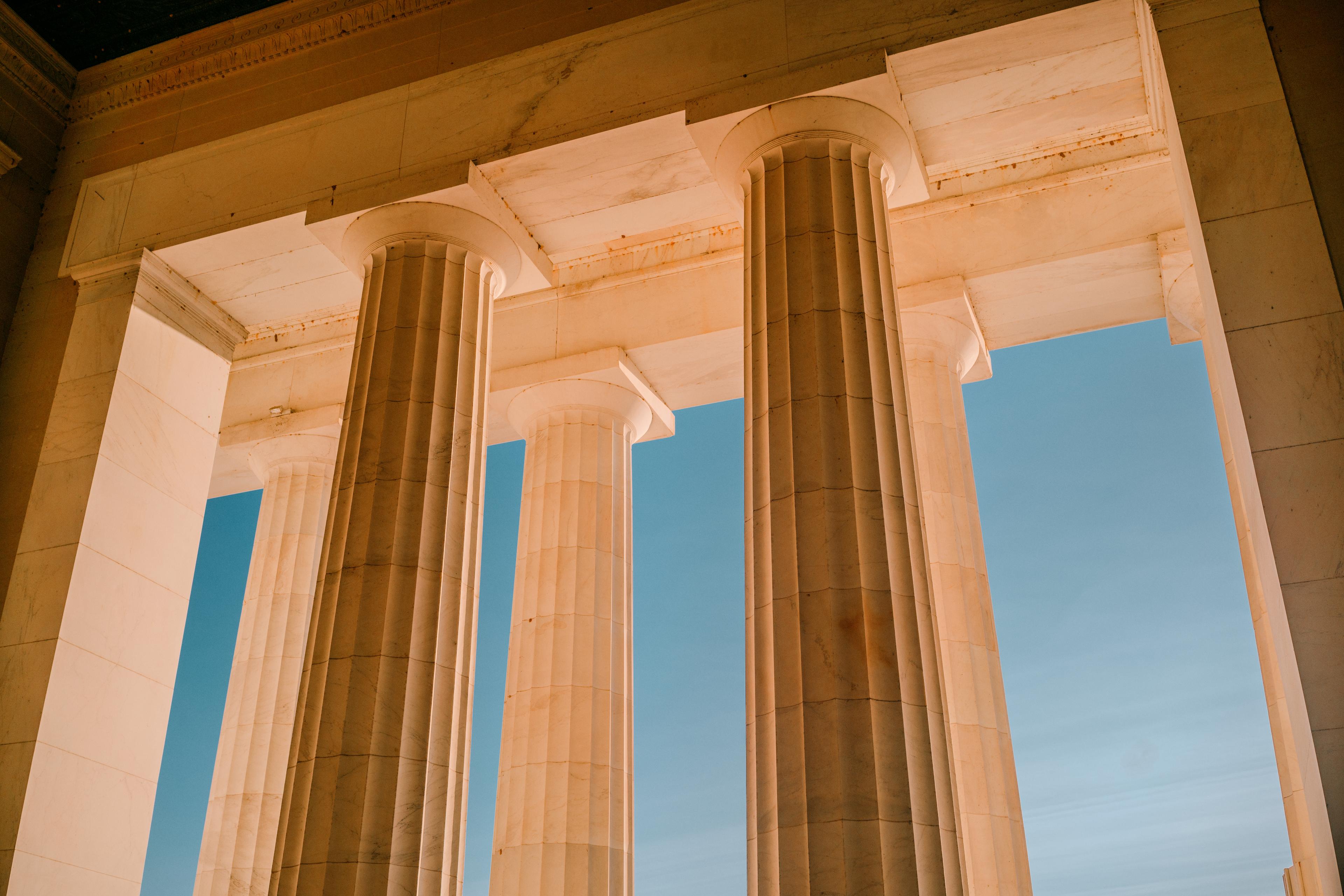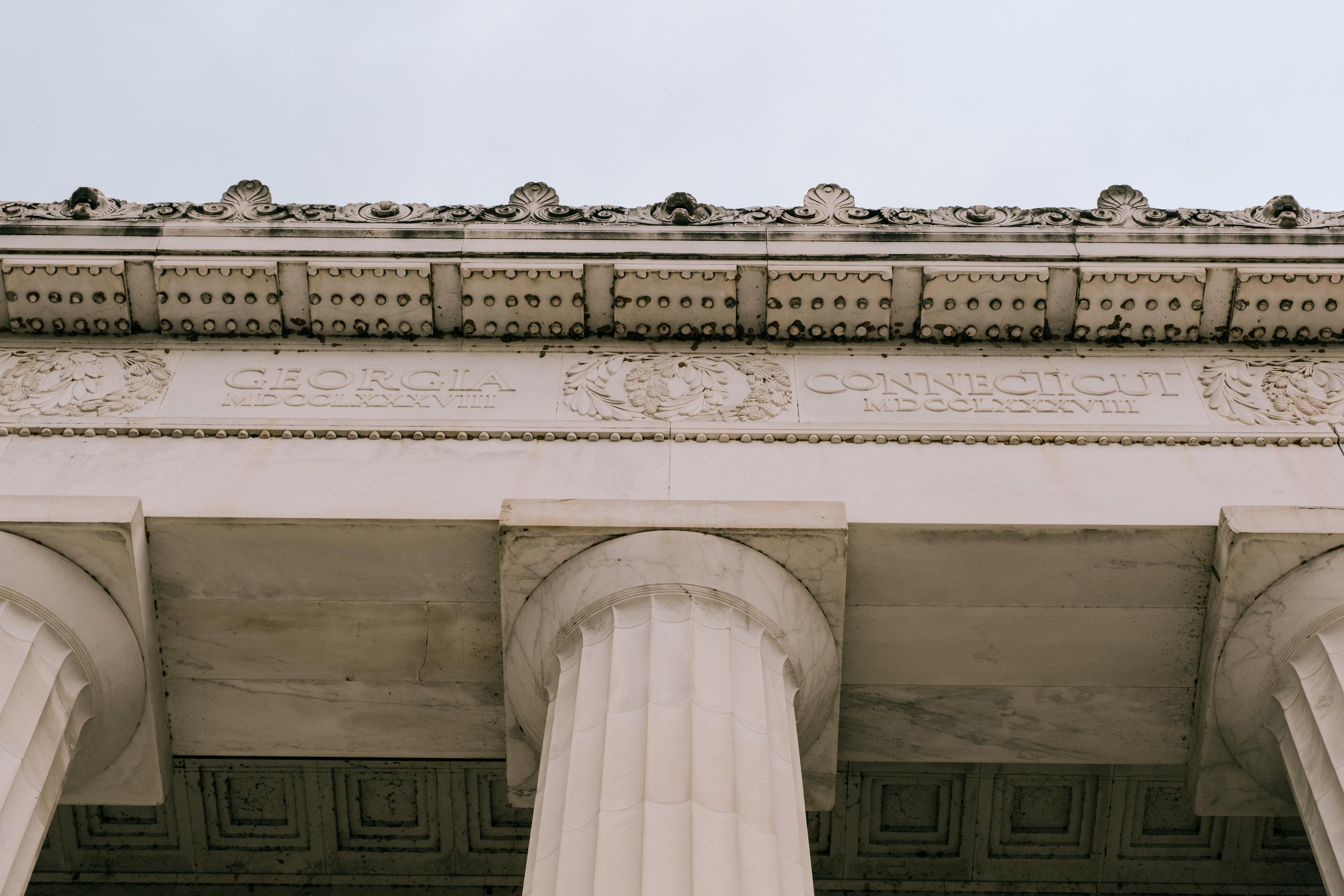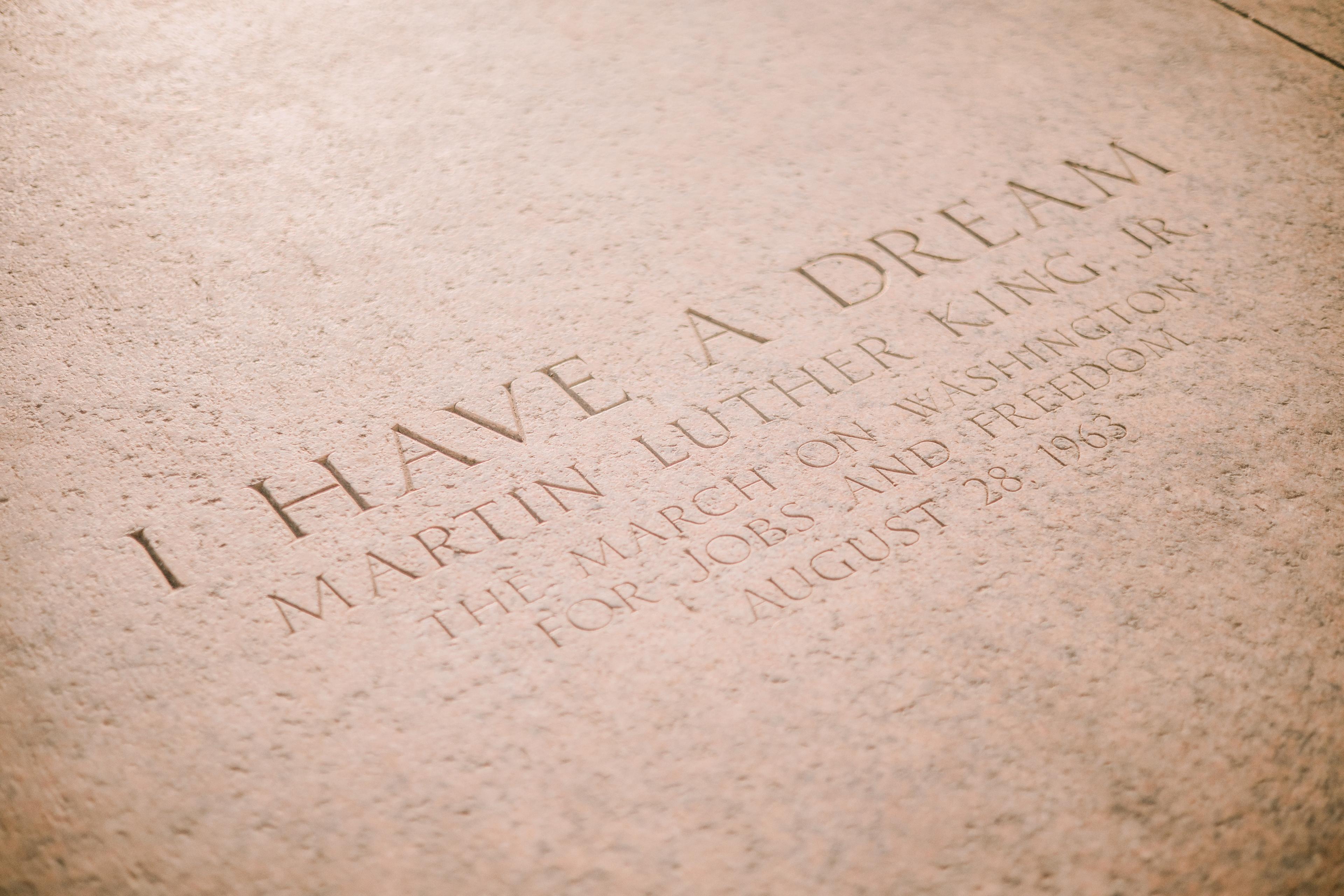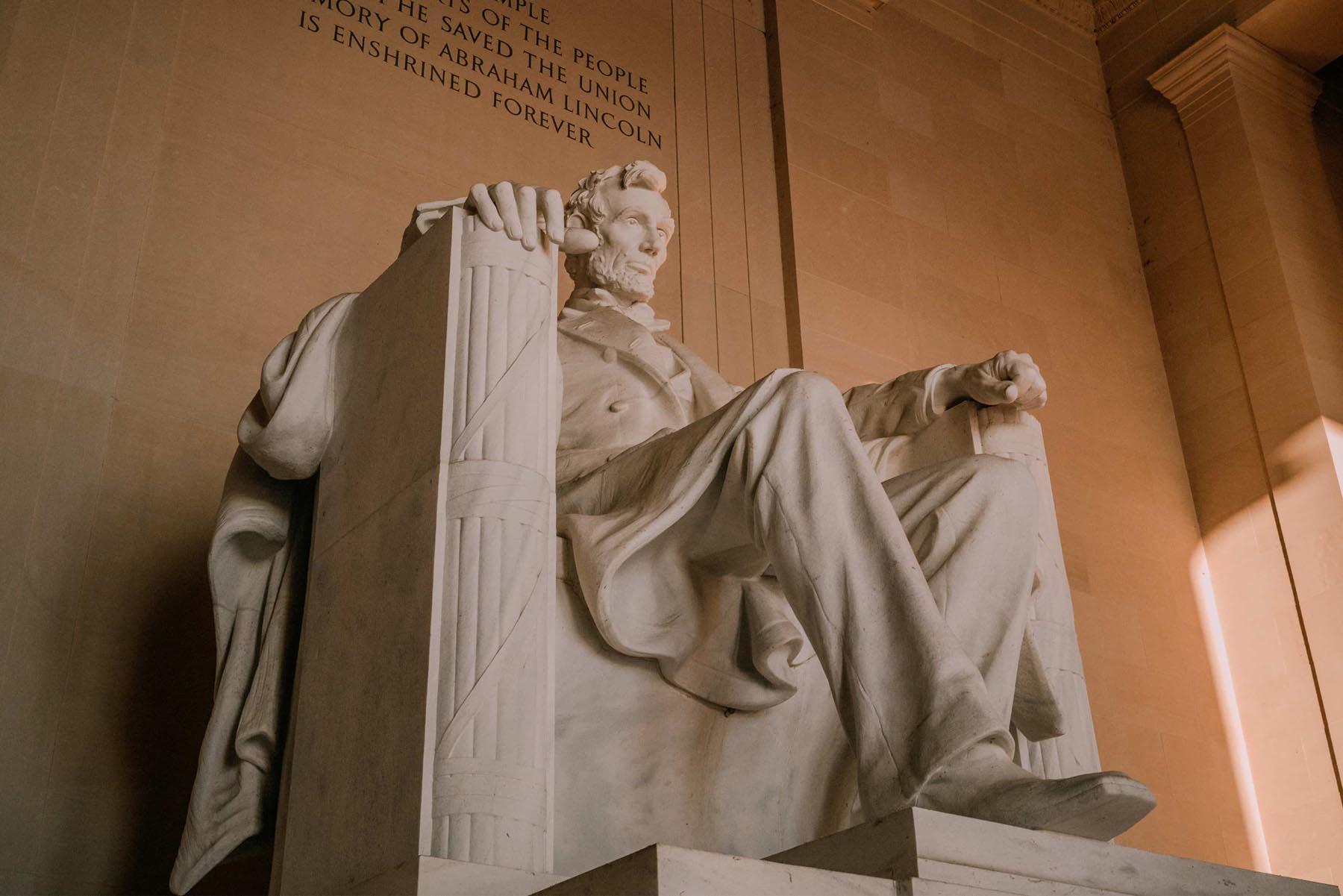
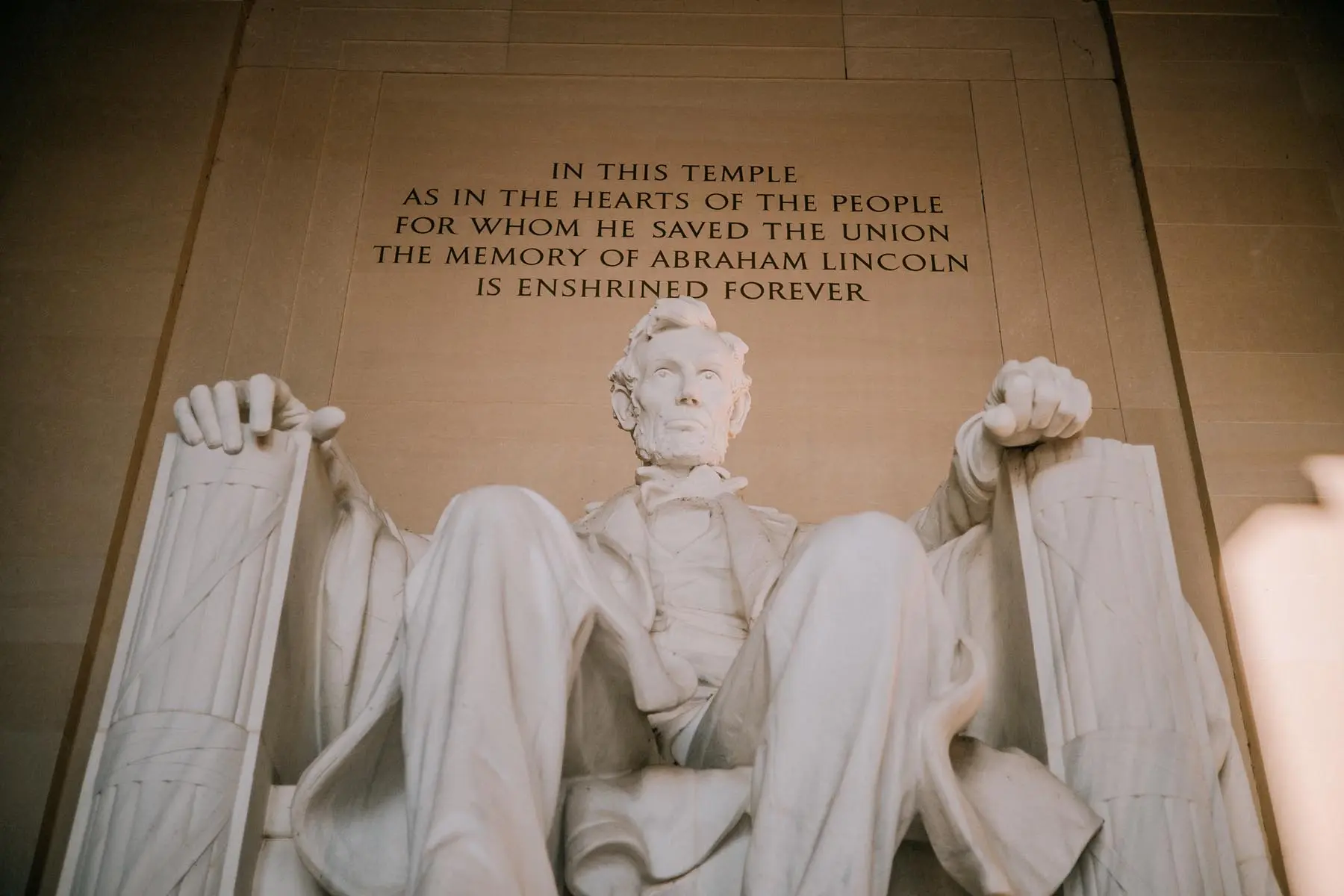
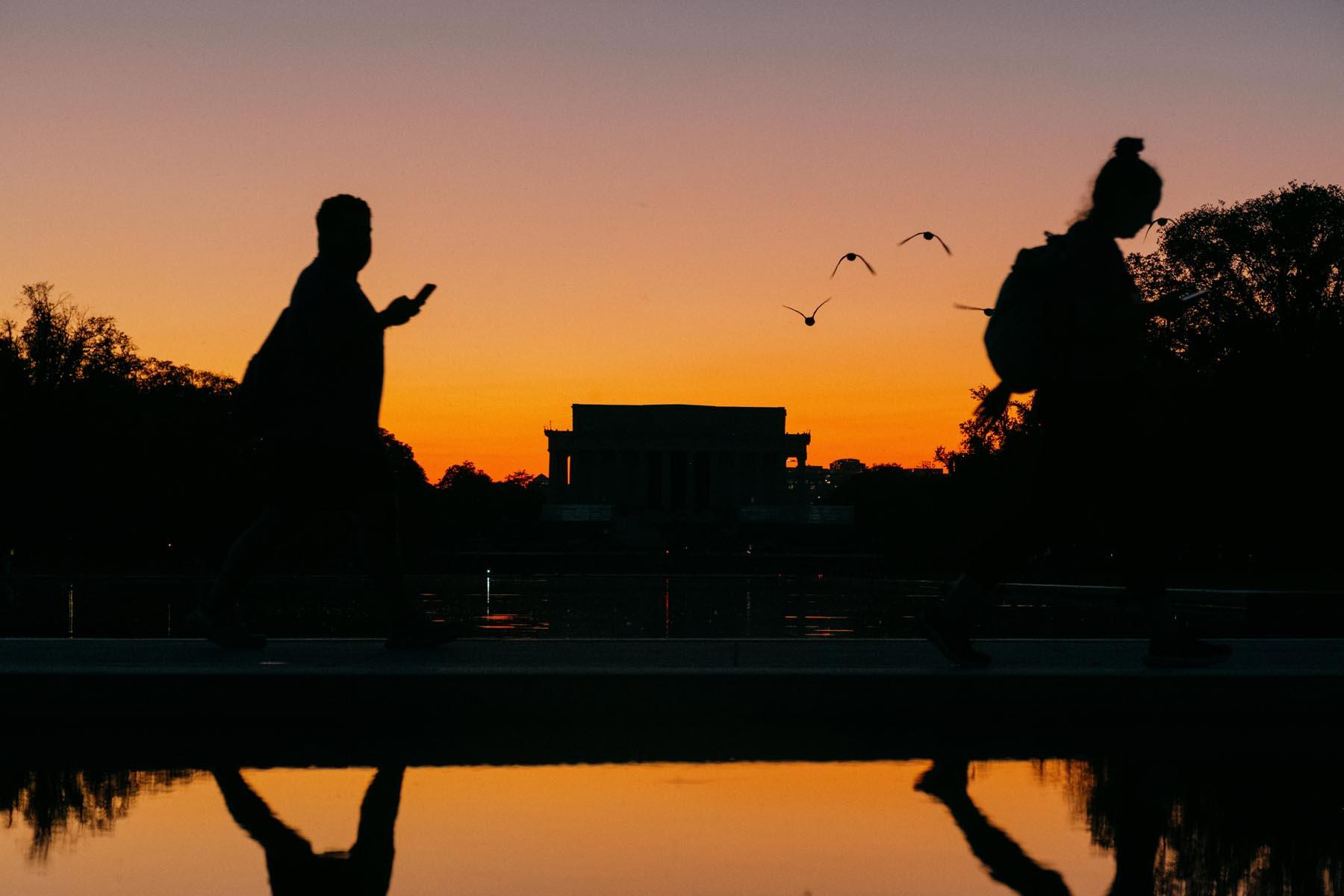
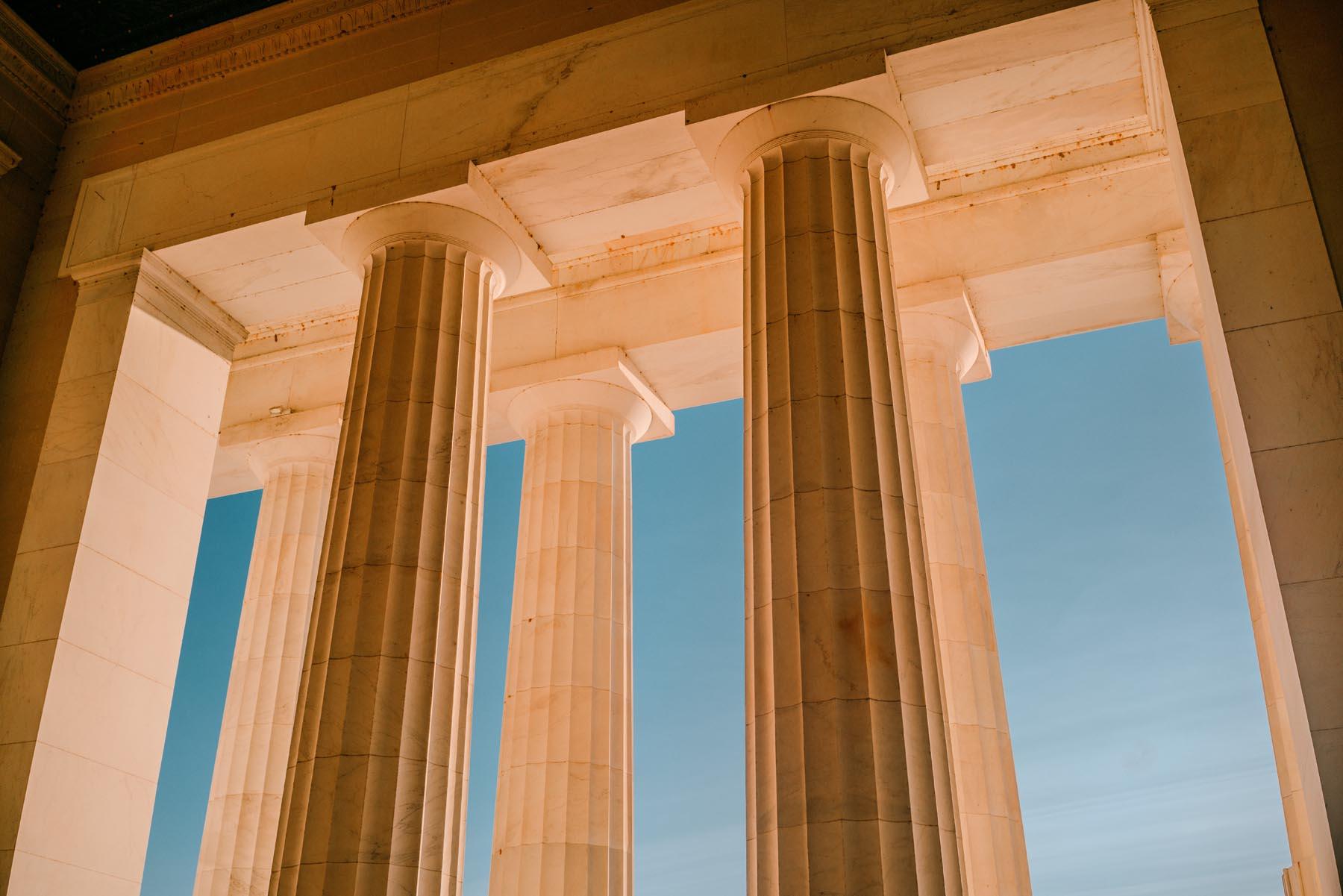
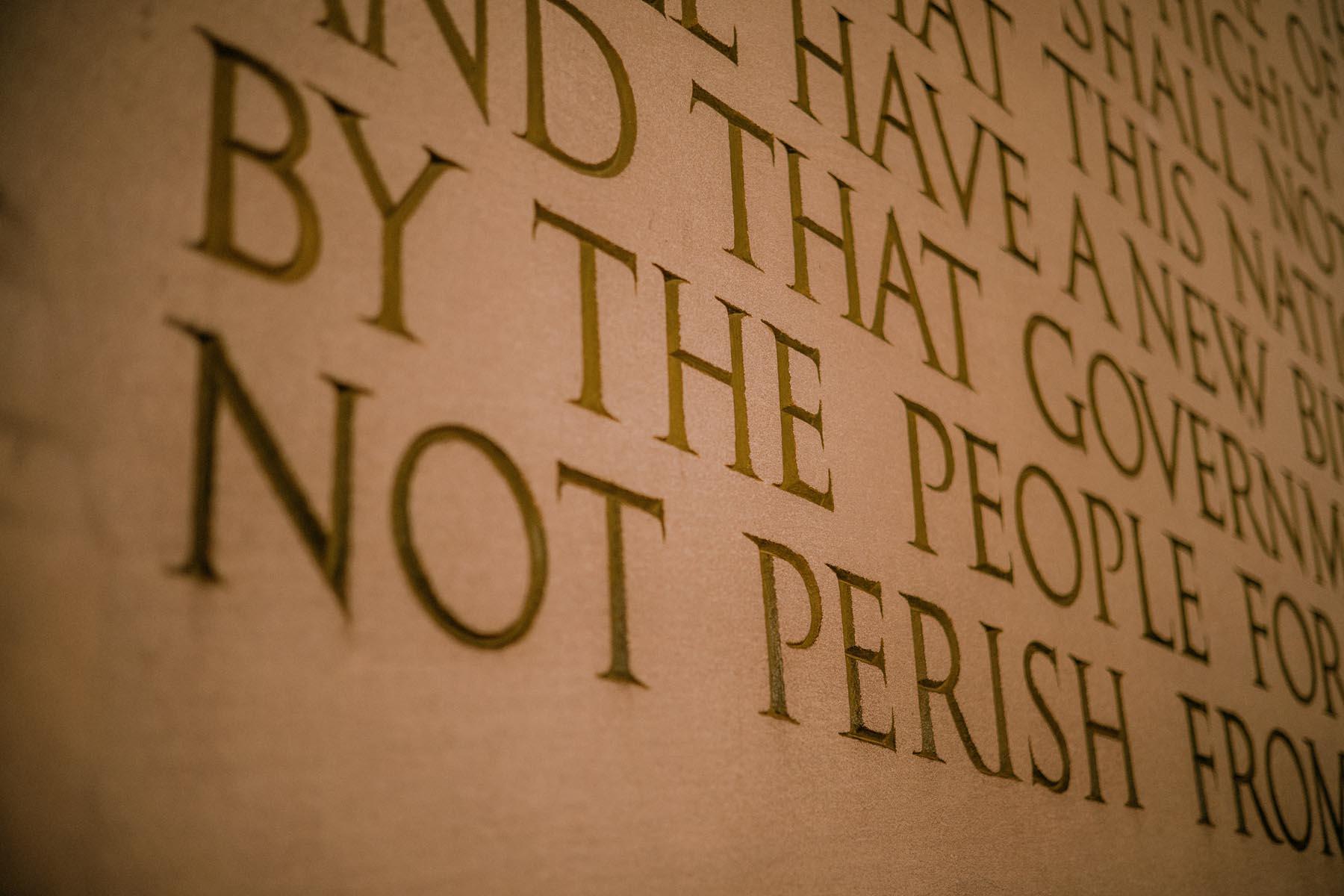
Lincoln Memorial
2 Lincoln Memorial Cir NW, Washington, DC 20002
Amenities
- Wheelchair accessible
- Open 24 hours
- Food & drink — Across the street on southern side of Lincoln Memorial. Daytime hours vary
- Temporary restrooms are available on the south side of the memorials. Daytime hours may vary.
- A temporary gift shop is available on the south side of the memorials. Daytime hours may vary.
During the government shutdown, open-air Memorials will generally remain accessible to visitors. Restrooms, bookstores, gift shops, and information kiosk services may be suspended. For more information, please visit: doi.gov/shutdown.
The Lincoln undercroft is under construction, but the Memorial is still open. The restrooms and gift shop are available at a temporary site south of the Memorial along Daniel French Drive SW.
The Lincoln Memorial honors the sixteenth President of the United States. Lincoln served as President from March 1861 until his assassination in April 1865 and is best known for leading the country during the American Civil War, preserving the Union, and emancipating enslaved people.
Abraham Lincoln was born on February 12, 1809, in a log cabin in Hardin County, Kentucky. He grew up in a poor family and had limited formal education but was an avid reader and taught himself many subjects. He worked various jobs (including rail-splitter, store clerk, and surveyor) before becoming a lawyer. He eventually entered politics and served in the Illinois State Legislature and the U.S. House of Representatives.
Before being elected president in 1860, Lincoln gained national recognition during the Lincoln-Douglas debates in 1858, where he argued against the expansion of slavery. His entire presidency was marked by the American Civil War, during which he worked tirelessly to preserve the Union and end slavery—eventually issuing the Emancipation Proclamation in 1863, which declared that all enslaved people in Confederate-held territory were free. He was re-elected in 1864, but was assassinated by John Wilkes Booth on April 14, 1865, at Ford's Theatre in Washington, D.C.
Lincoln's leadership and dedication to the principles of democracy and equality were instrumental in shaping the nation's future. His Gettysburg Address and Second Inaugural Address are among the most famous speeches in American history, emphasizing the need for national unity and the moral imperative of ending slavery.
The former president’s legacy is honored at the Lincoln Memorial, which features a larger-than-life statue of him and inscriptions of his most famous speeches. The Memorial, built between 1914 and 1922, is a symbol of his enduring impact on the nation. It is surrounded by thirty-six Doric columns representing the states in the Union at the time of his death, and it includes murals depicting themes of emancipation and reunion.

Take a virtual stroll through this National Mall site
Videos
History
Timeline of events
The former president is born in a log cabin in Hardin County, Kentucky.
The Lincoln family moves to Illinois.
Lincoln then moves to New Salem, Illinois, where he works as a store clerk.
Lincoln is elected to the Illinois State Legislature.
Lincoln marries Mary Todd in Springfield, Illinois.
Lincoln is elected to the U.S. House of Representatives.
Lincoln’s second son, Edward Baker “Eddy/Eddie” Lincoln, passes away at three years of age.
Lincoln participates in the Lincoln-Douglas debates, gaining national recognition.
Lincoln is elected as the 16th President of the United States.
Lincoln is inaugurated as President.
The Civil War commences with the Battle of Fort Sumter off of the coast of Charleston, South Carolina.
The interception of Confederate envoys on the British RMS Trent by the USS San Jacinto leads to the Trent Affair. Though Lincoln is not primarily known for his foreign relations as president, he and his cabinet navigate this crisis excellently.
Lincoln’s third son, William Wallace “Willie” Lincoln, passes away at eleven years of age.
Sep. 22: Lincoln issues the preliminary Emancipation Proclamation.
Lincoln issues the final Emancipation Proclamation.
Lincoln delivers the Gettysburg Address.
Lincoln is re-elected as president.
The Civil War effectively ends with General Lee's surrender at Appomattox Court House.
Lincoln is assassinated by John Wilkes Booth at Ford's Theatre in Washington, D.C.
Vice President Andrew Johnson succeeds Lincoln and becomes the 17th president.
The Confederate Army of the Trans-Mississippi becomes the last major Confederate force to surrender.
Emancipation finally occurs in areas of Texas when Union Army Major General Gordon Granger orders the enforcement of the Emancipation Proclamation.
The Army Corps of Engineers conduct several land reclamation projects in the Potomac Flats area, and as a by-product of dredging, the area that is the National Mall is extended west of the Washington Monument to where the Lincoln Memorial would be built.
Lincoln’s youngest son, Thomas “Tad” Lincoln, passes away at eighteen years of age. In all, Mary Todd Lincoln tragically outlived her husband and three of her four sons.
A congressional act establishes the Lincoln Memorial Commission.
Construction begins on the memorial.
The cornerstone of the Memorial is laid at 3:07 PM. The cornerstone cavity contained an American flag, a Bible, and a map of the Gettysburg battlefield, among other items.
The United States’ active participation in World War I slows construction speed due to labor and material shortages.
The memorial is dedicated by President Warren Harding, attended by more than fifty thousand people including former president William Howard Taft and former Secretary of War Robert Lincoln (Abraham Lincoln’s only surviving son).
The Reflecting Pool is constructed.
Overhead lighting system installed.
Marian Anderson performs at the Lincoln Memorial, signaling its use for civil rights gatherings.
During WWII, more temporary buildings were built adjacent to the Navy and Munitions Buildings (Constitution Gardens); others were built on the south side of the Reflecting Pool. Elevated pedestrian bridges were constructed across the Reflecting Pool to join them with the Navy and Munitions Buildings.
Dr. Martin Luther King Jr. delivers his “I Have a Dream” speech during the March on Washington for Jobs and Freedom at the memorial.
Key Features
Partially modeled after the ancient Athens’ Parthenon, the Lincoln Memorial is a sight to be seen and is probably most known the larger-than-life statue of Lincoln that looks out over the capital, designed by sculptor Daniel Chester French and carved by the Piccirilli Brothers.
Other unique elements include:
Cultural Impact
The Lincoln Memorial has had a profound cultural impact since its dedication in 1922—serving as a symbol of national unity, democracy, and the enduring legacy of Abraham Lincoln.
It has been a site for significant historical events and public gatherings, particularly in the context of civil rights. For example, Marian Anderson's 1939 performance at the Lincoln Memorial marked a pivotal moment in the fight against racial segregation. Additionally, Dr. Martin Luther King, Jr. delivered his iconic “I Have a Dream” speech at the Memorial during the 1963 March on Washington for Jobs and Freedom, further cementing its role as a symbol of the struggle for equality and justice.
The Memorial is even featured on the penny!
The Abraham Lincoln Memorial continues to inspire visitors and serves as a place of reflection on the values and principles that define the United States.
Reflection Questions
High school learners: Our nation’s past is complex and often provokes reflection, especially as we look to the future.
Here are a few questions to inspire deeper thinking:
- How did Abraham Lincoln's views on slavery evolve over the course of his political career?
- What were the main challenges Lincoln faced during the Civil War and how did he address them?
- Why has the Lincoln Memorial been used as a site for civil rights events, such as Marian Anderson's performance and Dr. Martin Luther King, Jr.'s “I Have a Dream” speech?
Educational Activities
Other Resources
Interested in learning more? The following links will provide you with additional context and information:
